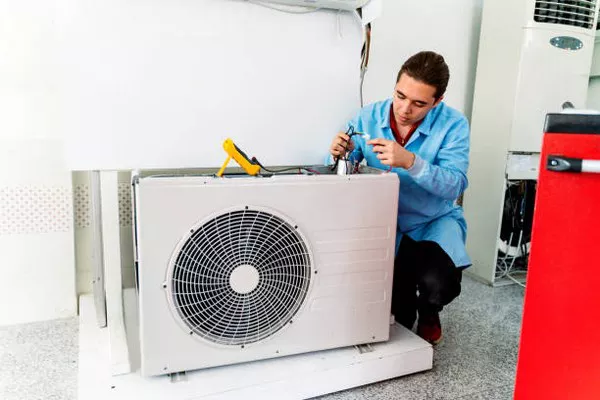Ammonia refrigeration systems are widely recognized for their efficiency, safety, and eco-friendliness in industrial cooling applications. These systems play a critical role in preserving perishable goods, supporting industrial processes, and maintaining comfortable indoor environments. In this article, we delve into the inner workings of ammonia refrigeration systems, exploring their components, processes, and benefits.
Components of an Ammonia Refrigeration System
An ammonia refrigeration system is composed of several key components that work in harmony to facilitate the cooling process:
Compressor: The heart of the system, the compressor, is responsible for pressurizing the ammonia gas. As the gas is compressed, its temperature and pressure increase, setting the stage for the refrigeration cycle.
Condenser: The high-pressure, high-temperature ammonia gas from the compressor is then directed to the condenser, where it releases heat and condenses into a high-pressure liquid. This phase transition results in a significant reduction in temperature, transforming the ammonia into a liquid state.
Expansion Valve: The high-pressure liquid ammonia flows through the expansion valve, which rapidly reduces its pressure. This sudden pressure drop causes the liquid ammonia to evaporate, absorbing heat from its surroundings and thus creating the cooling effect.
Evaporator: The low-pressure, low-temperature ammonia vapor enters the evaporator, where it absorbs heat from the area or substance that requires cooling. As heat is transferred from the substance to the evaporating ammonia, the substance’s temperature drops, and the ammonia vaporizes.
The Refrigeration Cycle
The operation of an ammonia refrigeration system is governed by the principles of the vapor compression refrigeration cycle. This cycle consists of four main stages: compression, condensation, expansion, and evaporation.
Compression: The cycle initiates with the compressor, where gaseous ammonia is compressed, increasing both its pressure and temperature.
Condensation: The high-pressure, high-temperature ammonia gas is then led into the condenser, where it releases heat to the surrounding environment. As a result, the ammonia gas condenses into a high-pressure liquid.
Expansion: The high-pressure liquid ammonia moves through the expansion valve, which causes a sudden pressure drop. This reduction in pressure triggers the liquid ammonia to rapidly evaporate, transitioning it to a low-pressure vapor.
Evaporation: The low-pressure ammonia vapor enters the evaporator, where it absorbs heat from its surroundings. This heat absorption causes the ammonia vapor to evaporate, completing the cycle and returning to the compressor as a low-pressure gas.
Benefits of Ammonia Refrigeration Systems
Ammonia refrigeration systems offer several notable advantages that contribute to their popularity in various industrial and commercial applications:
High Efficiency: Ammonia has excellent thermodynamic properties, making it an efficient refrigerant choice. Its high latent heat of vaporization allows for effective heat transfer, resulting in efficient cooling processes.
Eco-Friendly: Unlike many synthetic refrigerants, ammonia is a natural substance that has minimal impact on the environment. It has zero ozone depletion potential (ODP) and a negligible global warming potential (GWP), aligning with sustainability goals.
Energy Savings: The thermodynamic properties of ammonia contribute to energy savings, as the system requires less energy to achieve the desired cooling effect compared to other refrigerants.
Wide Temperature Range: Ammonia refrigeration systems can achieve a wide range of temperatures, from extremely low temperatures suitable for freezing applications to moderate temperatures used in air conditioning.
Safety: While ammonia is classified as a toxic substance, its use in refrigeration systems is generally safe when proper maintenance and safety protocols are followed. Ammonia has a distinct and pungent odor that serves as an early warning of leaks, allowing for timely response and mitigation.
FAQs about Ammonia Refrigeration Systems
1. Is ammonia safe for use in refrigeration systems?
While ammonia is considered safe when handled correctly and used in accordance with established safety guidelines, it is essential to ensure proper training and maintenance. Ammonia has a strong, unmistakable odor that serves as an early warning sign of leaks. Regular inspections, proper ventilation, and adherence to safety protocols are critical to maintaining a safe operating environment.
2. Are ammonia refrigeration systems energy-efficient?
Yes, ammonia refrigeration systems are known for their energy efficiency. Ammonia’s superior thermodynamic properties allow for efficient heat transfer, resulting in lower energy consumption compared to some other refrigerants. This efficiency translates to reduced operational costs and environmental impact.
3. What industries commonly use ammonia refrigeration systems?
Ammonia refrigeration systems are commonly used in industries such as food processing, cold storage warehouses, beverage production, chemical manufacturing, and ice rinks. Their ability to provide a wide range of temperatures and their eco-friendly nature make them suitable for various cooling applications.
4. How do ammonia refrigeration systems compare to synthetic refrigerants?
Ammonia refrigeration systems have gained favor due to their eco-friendliness and efficiency. Unlike many synthetic refrigerants, ammonia has minimal environmental impact, with zero ozone depletion potential (ODP) and a low global warming potential (GWP). This makes ammonia a more sustainable choice in line with environmental regulations.
5. What maintenance is required for ammonia refrigeration systems?
Regular maintenance is essential for the safe and efficient operation of ammonia refrigeration systems. This includes routine inspections, leak detection, and adherence to safety protocols. Qualified technicians should handle maintenance tasks, and any detected issues should be promptly addressed to prevent potential hazards.
Conclusion
Ammonia refrigeration systems are a cornerstone of industrial cooling, offering a combination of efficiency, eco-friendliness, and versatility. Through a well-defined cycle that involves compression, condensation, expansion, and evaporation, these systems harness the properties of ammonia to provide effective cooling solutions across a range of industries. Their benefits, including energy efficiency, low environmental impact, and wide temperature range, underscore their significance in modern refrigeration technology. By embracing proper safety measures and maintenance practices, industries can harness the potential of ammonia refrigeration systems to optimize their cooling needs while minimizing their ecological footprint.

